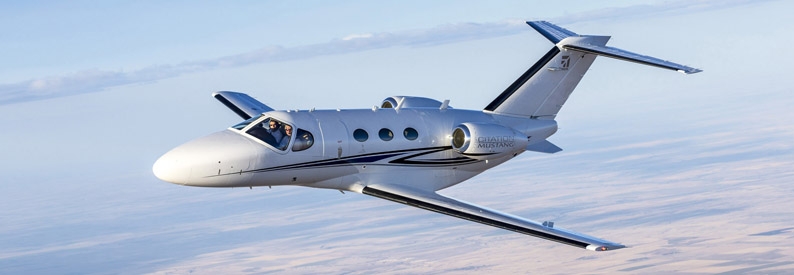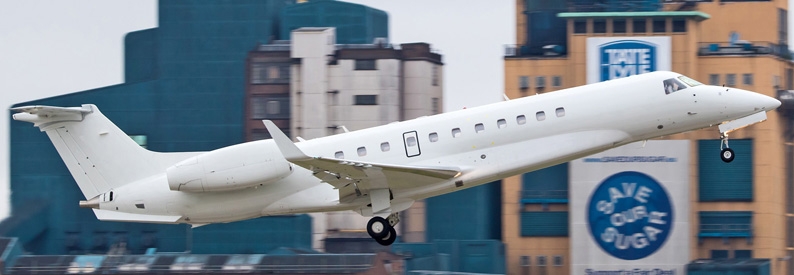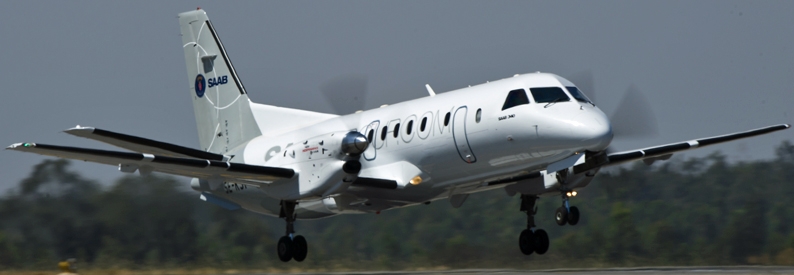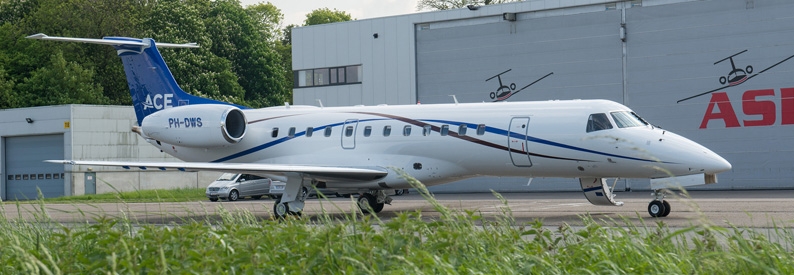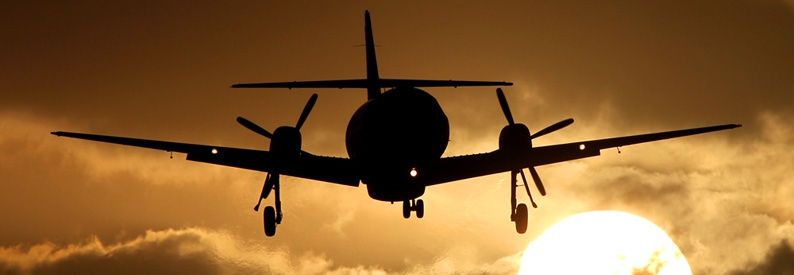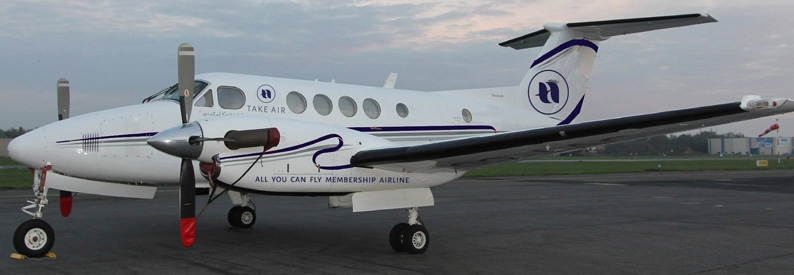ASL Group plans to expand its fleet with additional Citation-series jets and grow the group charter segment with more Embraer aircraft, co-chief executive Johan Maertens told ch-aviation in an exclusive interview.
"We’re expecting to add more Citation XLS jets and are considering expanding our owned fleet of Citation Mustang aircraft," he said. "At the other end of the scale, we’re also looking at more E-Jets for group charter operations."
The group's current fleet includes around 45 aircraft across 15 types, ranging from King Air B200 turboprops to long-range jets like the Falcon 7X. "Having so many types is not by design but driven by demand, as our core business is aircraft management," Maertens explained. "Businesses and high-net-worth individuals place their aircraft on our air operator's certificate (AOC) to generate revenue when they’re not using them."
Ultra-long-range jets such as the Global-series or Gulfstream Aerospace aircraft are currently absent from ASL's fleet. "We operate Dassault Aviation jets and Legacy-family aircraft capable of reaching the United States with no issue," Maertens said. "In this business, we follow the owners' needs, and in our region most fly within Europe for business, so larger aircraft are rarely required.”
Synergies across AOCs
ASL holds three AOCs, two in the Netherlands and one in Belgium. "Our largest, ASL N.V., trading as ASL Group Private Jet Services, is based in Belgium and includes around 30 aircraft, ranging from four-seat Citation Mustangs to Legacy 500s with capacity for up to 10 passengers," Maertens said.
The two Dutch AOCs are JetNetherlands B.V., which focuses on larger jets such as the Falcon 900EX and the Legacy 600 with a fleet of eight aircraft, and ASL (Netherlands) B.V., doing business as ACE - Air Charters Europe, which operates three E135s configured for 32 passengers and one E145 with 42 seats. Currently, there are no plans to pursue additional certifications in other jurisdictions.
"We are able to create synergies across the AOCs that reduce costs," Maertens said. "Although each certification covers a different line of business, we avoid duplicating costs. In the Netherlands, the nominated persons are the same across both AOCs."
Executive aviation conglomerate
Beyond aircraft management and charter services, ASL is active across several segments of the aviation market. "In the specialised operations (SPO) category we operate King Air turboprops that are used as television relay stations," Maertens said.
The company also operates under Part-NCC (non-commercial complex) regulations and has launched a fractional ownership programme through Blue Sky Aviation (Belgium), which includes two Vision Jet G2s and a PC-12 reserved exclusively for members. “It allows us to fly a PC-12 to destinations like Courchevel, which is incredibly popular for skiing but very complex to operate into," he added.
The group operates two Learjet 45s configured specifically for medical missions, carrying out repatriation flights and other services on behalf of insurance and credit card companies. "It’s a growing business," Maertens noted. In addition to the dedicated air ambulances, other jets in the fleet are also used for organ transports and isotope flights across Central Europe. "These missions can happen at any time, and the time window is very short - speed is essential."
ASL runs a Part 145 maintenance organisation, Rijnmond Air Services (RAS), based at Rotterdam and specialising in executive aviation. "Our business is split roughly equally between internal and third-party work," Maertens said. "We don’t automatically send all internal maintenance to RAS to avoid overwhelming the facility. Instead, we focus on attracting third-party clients, and that business is growing." A third hangar is currently under construction to meet increasing demand for maintenance and hangarage.
However, post-COVID supply chain issues continue to affect maintenance operations. "It’s a major problem for everyone. We're still facing delays with our second-hand aircraft that began during the pandemic," Maertens said. "Replacements that once took weeks now can take months." While these issues affect almost all manufacturers, Maertens expects the industry to stabilise within a year or two.
ASL also manages seven fixed-base operations (FBOs) across Belgium and the Netherlands, offering handling and catering services at some of these locations. Additionally, the group runs a flight school, ASL Academy, based at Antwerp, with a training fleet that includes Cirrus Aircraft, Diamond Aircraft Industries, Pipistrel Aircraft, and Sonaca light aircraft. While internal pilot training is still developing, Maertens said recruitment had not been an issue. "We recruit throughout Europe and, unlike many commercial airlines, we’ve had no trouble finding pilots," he added.
Management and charter outlook
On the aircraft management side, Maertens describes the market as stable. "Europe remains our core market. Jets with eight to 10 seats are the most popular," he said. With a customer base primarily composed of businesses located around the Benelux region, attracting clients can be challenging. "In this industry, much relies on word of mouth, and owners often shop around. Competition in the Benelux is intense, with at least two major players in the region active in the same segment," he added.
"Operating more than 40 aircraft is no small feat. In this segment, we are quite large and have attracted some owners from France and southern Europe," Maertens noted. The group also supports clients in the acquisition and sale of aircraft.
On the charter side, Maertens sees similar dynamics to the management segment. "It’s mainly business travel, with some additional leisure demand during the summer months," he said. This year, demand is slightly down by a few percentage points. "We believe this is due to geopolitical uncertainty, with customers being more cautious about spending. The market peaked after COVID but is now slowly cooling," he explained.
ASL's Belgium division recently secured a foreign air carrier permit (FACP), allowing it to operate charters to the United States. "We already had this under JetNetherlands, but it now covers all our AOCs," Maertens said. Nevertheless, around 80% of ASL’s charter flights remain within Europe. "Given our fleet composition, Europe is our sweet spot - shorter flights to remote airports deliver significant time savings," he added. Key markets include France, Germany, Spain, and the United Kingdom.
Demand for group charters is solid. "They’re ideal for sports teams when the distances are too long for train or bus travel, for touring music bands, international institutions and governments, or multinational firms wanting to incentivise their teams or simply secure cost-effective point-to-point transport. The 40-seat segment suits these missions far better than commercial airlines, which often involve stopovers," Maertens explained. Operating E135s and E145s, ASL also offers semi-scheduled flights from Antwerp to Innsbruck in winter and Ibiza in summer. "These flights have set timetables and can be booked online. They give customers a taste of business aviation, with dedicated terminals, which is quite appreciated," he added.
Sustainable aircraft to ease slot constraints
Looking ahead, ASL is exploring new market opportunities through sustainable technologies. Initially, it held options for six electric vertical take-off and landing (eVTOL) Lilium Jets. However, following Lilium’s bankruptcy, ASL has shifted focus to the Vaeridion Microliner, a nine-seat, fully electric aircraft with an IFR (instrumental flight rules) range of at least 4,500 kilometres, expected to be certified by 2030. The group effectively became the launch customer for the Microliner by ordering up to 10 units at the 2025 Paris Air Show, marking one of Europe’s first commercial commitments to all-electric regional flights.
"With these aircraft, we believe we can implement a dynamic booking model, enabling people to fly to smaller destinations at more affordable prices than with the current generation of similar sized aircraft," Maertens explained.
ASL also sees electric aircraft as a potential way to address slot constraints, a persistent challenge for executive charter operators. "Last-minute demand is common in our industry," Maertens said. "For instance, Eindhoven recently became slot-regulated, risking limited access for business jets. At slot-constrained airports, an unintended effect of slot regulation is that it favours scheduled airlines, while our on-demand flights may struggle to meet slot-use requirements. This could put us at a disadvantage and restrict our operations."
He added that electric aircraft, being much quieter, could be part of the solution. "In the Netherlands and Belgium, where noise and emission standards are very high, quieter electric aircraft should help expand the slot pool, allowing us to grow our business."
